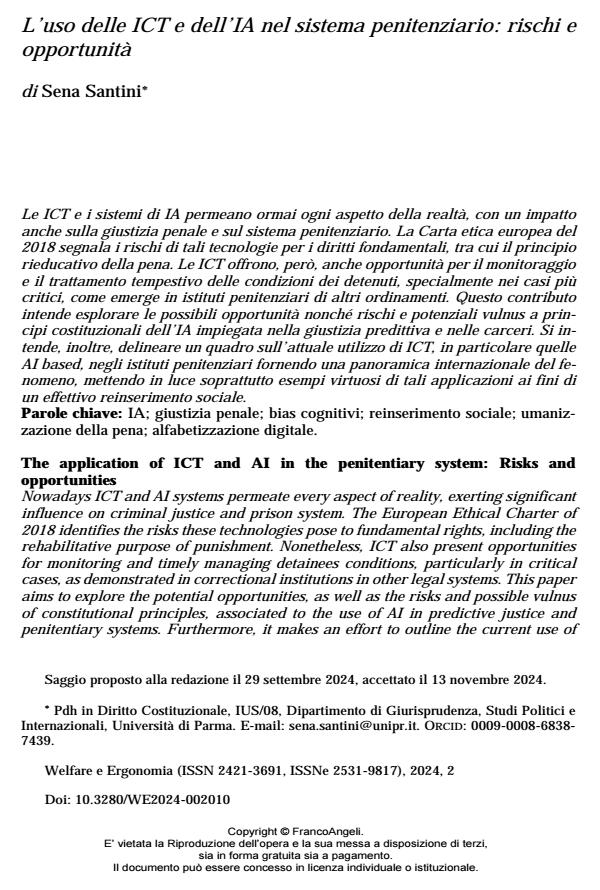The application of ICT and AI in the penitentiary system: Risks and opportunities
Journal title WELFARE E ERGONOMIA
Author/s Sena Santini
Publishing Year 2025 Issue 2024/2
Language Italian Pages 15 P. 141-155 File size 71 KB
DOI 10.3280/WE2024-002010
DOI is like a bar code for intellectual property: to have more infomation
click here
Below, you can see the article first page
If you want to buy this article in PDF format, you can do it, following the instructions to buy download credits

FrancoAngeli is member of Publishers International Linking Association, Inc (PILA), a not-for-profit association which run the CrossRef service enabling links to and from online scholarly content.
Nowadays ICT and AI systems permeate every aspect of reality, exerting significant influence on criminal justice and prison system. The European Ethical Charter of 2018 identifies the risks these technologies pose to fundamental rights, including the rehabilitative purpose of punishment. Nonetheless, ICT also present opportunities for monitoring and timely managing detainees conditions, particularly in critical cases, as demonstrated in correctional institutions in other legal systems. This paper aims to explore the potential opportunities, as well as the risks and possible vulnus of constitutional principles, associated to the use of AI in predictive justice and penitentiary systems. Furthermore, it makes an effort to outline the current use of ICT, particularly AI-based technologies, in correctional institutions by providing an international overview of the phenomenon, with a focus on exemplary applications that promote an effective social reintegration.
Keywords: AI; criminal justice; cognitive bias; social reintegration; humanization of punishment; digital literacy.
Sena Santini, L’uso delle ICT e dell’IA nel sistema penitenziario: rischi e opportunità in "WELFARE E ERGONOMIA" 2/2024, pp 141-155, DOI: 10.3280/WE2024-002010